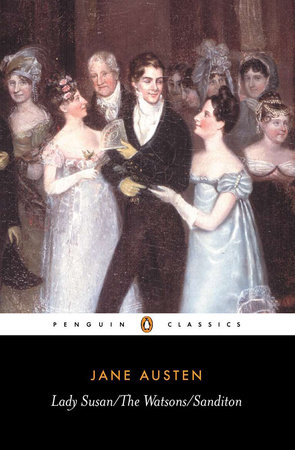Lady Susan is frequently dismissed by scholars as a youthful creation of Austen, not worthy of inclusion among her mature works. Many point to it as an example of her younger self experimenting with an epistolary novel, which she abandoned, and which she did not revisit in her later writing. She revised Elinor and Marianne, which she had initially written as an epistolary novel and it became Sense and Sensibility.

Southam dates the writing of Lady Susan to 1793-1794, (45) and it survived because Austen herself made a fair copy in 1805 (Morgan Library). This places the composition of Lady Susan just before she began Elinor and Marianne and First Impressions and before she wrote Northanger Abbey, which from the note in the introduction by Austen herself, we know to have been finished in 1803, though begun earlier, probably 1797 or 1798. (Project Gutenburg)
Modern readers may appreciate taking another look at Lady Susan. It was first published in 1871 by her nephew, James Edward Austen-Leigh, as a part of his Memoir of Jane Austen. He was working from a different copy, as the Austen manuscript was in the possession of Lady Knatchbull, Austen’s niece. Austen-Leigh included Lady Susan and several other fragments in his second edition of the Memoirs. Though Lady Susan bears a closer resemblance to other 18th Century works, such as Tom Jones, than to Austen’s later novels, it is not the failure of the epistolary form that some claim. Lady Susan may actually bring to mind that masterpiece of the epistolary form and self-absorbed scheming, Les Liaisons Dangereuse. The subjects–adultery, manipulation, class based licentiousness are all very much present in Lady Susan. Austen’s writing is witty, and she calls upon the reader to exercise some discernment to determine who is telling the truth and when. While it is true that the epistolary form can be difficult and at times contrived, Austen’s effort is not as weak as some would have it. She is working in this novella with characters who are less refined perhaps than her later characters, but they are just as fully developed and the storyline is brought to completion, though with a little help from the slightly intrusive narrator.
Try reading it again or for the first time.
Southam, B. C. Jane Austen’s Literary Manuscripts: a study of the novelist’s development through the surviving papers. Oxford UP, 1964.
Morgan Library https://www.themorgan.org/collection/jane-austen/lady-susan
Project Gutenburg eBook of Northanger Abbey http://www.gutenberg.org/files/121/121-h/121-h.htm#link2H_4_0001
Some questions to consider:
- Which character in Lady Susan was your favorite and why?
- Why do you think that the Vernon children are never named?
- How well do you think Austen uses the epistolary form? Have you read other novels in this form? What are the limitations, what are the advantages for a storyteller?
- As she does in some of her other novels, Austen ends this one rather abruptly and the narrator fills in the reader about what happened. Which of the characters got what they deserved–how? Which did not?
- If you were writing a continuation, which character’s point of view would the story be from and why?
- Lady Susan is a sort of Austen anti-heroine. What do you think are her redeeming qualities?
